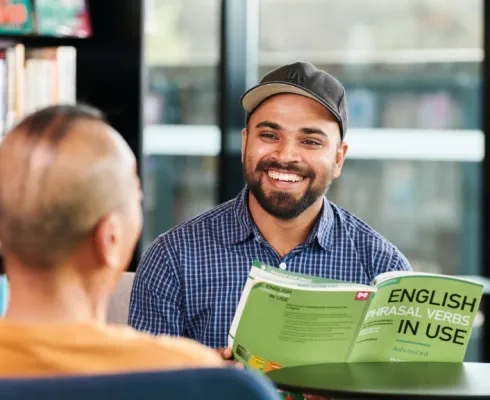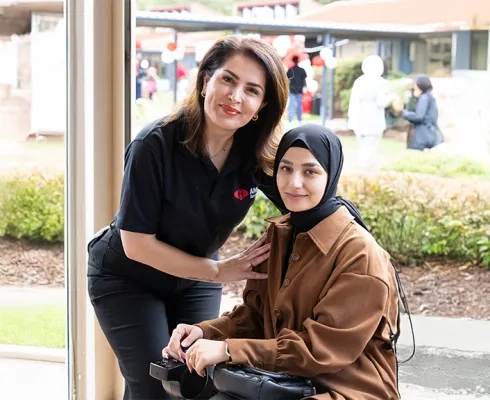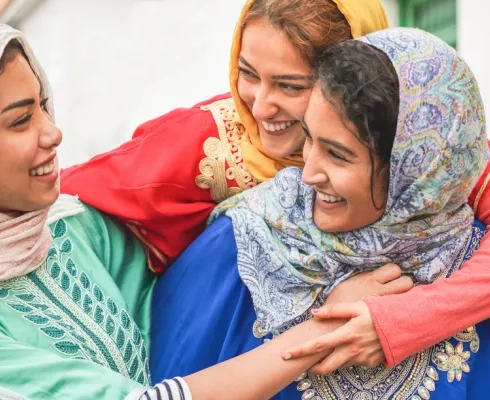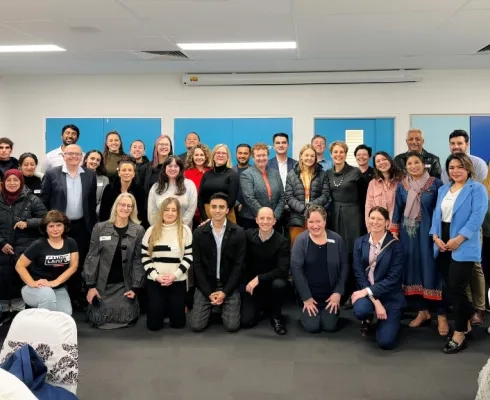You might expect that the educational barriers to success in the sciences would mean a low level of success for migrants in the industry. The reality has been just the opposite.
Speaking at his induction to Australia’s 100 National Living Treasures, the meaning of Dr Karl Kruszelnicki’s achievement wasn’t lost upon him.
“It’s amazing,” Kruszelnicki remarked. “You go from being on a ship and growing up in a refugee camp and the next thing you know… you are a national living treasure.”
Arguably Australia’s most recognizable scientist, a so-called answer waiting for a question who has made his career in the public eye of the Australian consciousness, Kruszelnicki arrived the refugee son of Holocaust survivors.
“I came by boat and my father was a refugee smuggler,” Kruszelnicki has boldly declared, determined to use his profile to shift the way our nation views its migrants.
Far from a mere mouthpiece for his industry, he’s been recognised by the scientific community and as one of the inaugural eight Australian Apple Masters, a position recognising outstanding passion and vision in the innovative sectors.
“I’m delighted, because it speaks for the importance of science in Australian society,” he said. It could be argued that it says even more for the importance of migrants.
While Dr Kruszelnicki’s combination of knowledge and charisma is unique, his contributions meld into the long narrative of Australian migrants impacting upon the scientific and innovative sectors.
Today, more migrants are employed in highly-skilled roles than in any other category. While this is partially a product of Australia’s skilled migrant policies, migrant contribution in skilled industries was established long before our policies aimed to produce it.
These individuals conquered displacement and a system geared against them to excel and bring change to their adopted nation.
Victor Chang, a decorated medical pioneer and Order of Australia member, overcame a childhood spent fleeing the wanton brutality of the Sino-Japanese war to change Cardiology in Australia and abroad.
In 1953, Victor arrived as a 17-year-old to an Australia still in the throes of the racist “White Australia” era of immigration.
Persevering with his studies, Chang received his degree in medicine, working and lecturing around the world before returning home to work as a cardiology consultant at St Vincent’s hospital.
In 1980, a drug called Cyclosporine made heart-transplant surgery feasible, but public debate impeded its application in Australia.
Asserting himself, Chang rallied financial and political support to found Australia’s first heart transplant program at St Vincent’s, pioneering the new technology with an elite rate of surgical success.
Deeply concerned about the industry’s lack of donors, Chang designed a mechanical valve for collapsed hearts, before utilizing his position as a dual citizen to foster international cooperation and personally search for a fully functional artificial heart.
His influence within our region was so high, Time Magazine retrospectively named him one of its two most impactful figures from 1979-89; yet perhaps his most telling honour came post-mortem.
In 1999, Don Bradman, Dawn Fraser, Fred Hollows and Victor Chang were the finalists for the People’s Choice Awards’ Australian of the Century award.
Amongst such seminal figures in the fabric of Australian society, that the immigrant with a soft voice and non-Anglo-Saxon features won via popular opinion demonstrates the profound impact he had in his adopted nation.
Alongside Chang in the historical elites of Australian science we find another decorated researcher, influential on a global scale. Yet even Sir Gustav Nossal was not immune to the linguistic and cultural challenges facing immigrants.
Arriving to Australia from Austria with his family, Sir Gus experienced what he has since referred to as “… a noisy wall of silence.”
“I was surrounded by these screaming kids. The only trouble was I couldn’t understand a word they were saying. It was quite disturbing,” he said.
Yet the six-year-old refugee, whose earliest memory is of Hitler’s on-stage barrage, became world-renowned for his landmark research on antibody formation and immunological tolerance.
Sir Gus’ expertise in these fields led to his leadership of the World Health Organisations program for Vaccines and Immunisation, as well as Australia’s Academy of Science and the International Union of Immunological Scientists.
From his first day in Australia, his father told him and his brother: “now that you’re in Australia you’re going to be Australians”.
Undoubtedly, his father’s efforts in fleeing their homeland was to our fortune. In 1997, Gustav was inducted into Australia’s National Living Treasures in 1997, an honour subsequently trumped in 2000 as Sir Gus was voted Australian of the Year.
Presently at the pinnacle of medical research and application is Malaysian-Chinese immigrant Peter Choong, who has spoken about the mental process of fortification required for an individual to overcome racism.
Choong himself conquered the marginalisation of his childhood to lead St Vincent’s Hospital’s world-renowned Orthopedic Unit, as well as publishing over 170 research publications predominately on bone and soft-tissue cancers.
The hospital’s Chief-Executive office, Patricia O’Rourke, has declared Choong “a true leader and pioneer .... His breakthroughs in limb-sparing surgery have offered new hope to people affected by bone cancer”.
These elder statesmen of their industry leave a legacy with their contributions, carried forward by today’s young.
Travelling in a boat disguised as a fishing vessel, such were the dangers of the journey ahead that Vietnamese-born Tan Le’s Mother, like many others on board, carried a small bottle of mercy-poison for her family.
Yet despite encounters with pirates and starvation, the four-year-old Tan Le reached Australia in 1982. Tan spent four months in a refugee camp, before moving to Footscray with her family.
Throughout her life, Tan’s grandmother never allowed her to forget the efforts of a grandfather she would never know, imbuing her with a sense of fortune for her position, an opportunity she did not take lightly.
By sixteen she had reached university, graduating in 1998 with a Commerce/Law degree from Monash University. Yet it was for her service within the Vietnamese community of Footscray that she was rewarded with the 1998 Young Australian of the Year award.
As an adult, Tan has furthered the application of scientific discovery through a series of innovative ventures, moving from the telecommunications sector into Electroencephalography, technology recording and mapping brain activity.
Her company Emotiv is unique in the sense that it aims to bring this technology not to specialists, but the masses, so that people can better understand their brains and improve their lives.
Though various in the ways in which they’ve interacted with and contributed to the scientific industry in Australia, these individuals are bound by the challenges facing all refugees as they assimilate.
From Tan Le’s entrepreneurial innovation to the lifesaving service of 29-year-old Ethiopian-born surgeon Garang Dut, recently awarded the John Monash Harvard scholarship for leadership to support his post-graduate studies, migrants continue to push the envelope in every aspect of scientific thought and practice.
If they reach anywhere near the lofty heights of those before them, Australia will continue to benefit from their efforts.
By Tom Danks




